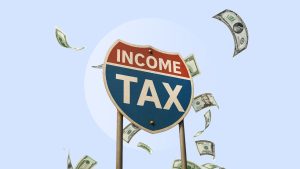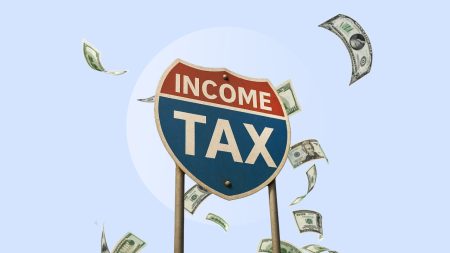whitebalance.space / Getty Images
One Big Beautiful Bill’s impact on student loans
- July 1, 2026: New borrowers can only access standard repayment or the new Repayment Assistance Plan (RAP) – July 1, 2028: Current IDR plans (except IBR) will be eliminated – Current SAVE borrowers will see interest resume August 1, 2025
- Current borrowers should consider switching to IBR before July 1, 2028, since it’s the only plan that will remain available. Parent PLUS borrowers must consolidate before July 1, 2026, or lose access to income-driven repayment entirely.
Key takeaways
- Income-driven repayment plans are facing major policy changes that make timing crucial for borrowers.
- There are four income-driven repayment plans to be aware of: PAYE, SAVE, IBR and ICR. The SAVE plan will be phased out.
- The Pay As You Earn (PAYE) plan will be available until July 1, 2027.
- The income-contingent repayment (ICR) plan will be available until July 1, 2026.
Income-driven repayment plans are repayment options offered by the federal government for federal student loans only. With these plans, you’ll pay a percentage of your discretionary income for a set period, at which point your remaining balance will be forgiven.
Around 28.5 percent of student borrowers are currently enrolled in an income-driven repayment plan, according to 2024 data from the Office of Federal Student Aid. If you’re struggling with your federal student loan payments, an income-driven repayment plan may be right for you, though there are some caveats to keep in mind before you sign up.

What to know about your evolving federal student loan repayment options
Wondering what your federal loan repayment options are? Principal loans writer Andrew Pentis breaks it down for you.
Learn more
What are the most common income-driven repayment plans?
Three income-driven repayment plans are available for new applications: Pay As You Earn (PAYE), income-based repayment (IBR) and income-contingent repayment (ICR). Students with federal Direct Loans may qualify for all the plans – although parents only qualify for ICR, and only if they consolidate those loans.
Keep in mind:
The SAVE plan appears in this comparison because millions of borrowers remain enrolled, but it’s no longer accepting new applications due to federal court injunction.
Each of the income-driven repayment plans comes with its own monthly payment and terms.
| Plan | Monthly payment | New repayment period | Eligible loans | Status |
|---|---|---|---|---|
|
Pay As You Earn (PAYE) |
10 percent of your discretionary income |
20 years |
Direct Loans made to students; Direct and FFEL Consolidation Loans made to parents that did not repay PLUS balances; FFEL; Perkins Loans if consolidated |
BEING PHASED OUT JULY 1, 2028 |
|
Saving on a Valuable Education (SAVE) |
5 percent of your discretionary income (undergraduate borrowers) or a weighted average between 5 and 10 percent of your discretionary income (borrowers with graduate loans) |
20 years for undergraduate loans, 25 years for graduate and professional loans or a mix of undergraduate and graduate loans |
Direct Loans made to students; Direct and FFEL Consolidation Loans made to parents that did not repay PLUS balances; FFEL loans if consolidated; Perkins Loans if consolidated |
BLOCKED BY COURT ORDER – NO NEW APPLICATIONS |
|
Income-Based Repayment (IBR) |
10 percent of your discretionary income if you’re a new borrower on or after July 1, 2014, 15 percent of your discretionary income if you borrowed before July 1, 2014 |
20 years if you’re a new borrower on or after July 1, 2014; 25 years if you borrowed before July 1, 2014 |
Direct Loans made to students; Direct and FFEL Consolidation Loans made to parents that did not repay PLUS balances; FFEL loans made to students; Perkins Loans if consolidated |
REMAINING OPTION POST-2028 |
|
Income-Contingent Repayment (ICR) |
20 percent of your discretionary income |
25 years |
Direct Loans, Direct PLUS loans, direct consolidation loans (including loans made to parents) |
BEING PHASED OUT JULY 1, 2028 |
Should I apply for an income-driven repayment plan?
Bankrate’s take:
Given the July 2028 deadline, current borrowers should consider switching to IBR since it’s the only plan that will survive the transition.
Applying for IDR makes sense in several situations, especially given upcoming changes:
- Your monthly payments are too high compared to your income
- You work in public service and qualify for PSLF
- Your income varies or you’re between jobs
- You want to avoid missed payments that could hurt your credit score
The annual recertification seemed like a hassle at first, but it actually helped when my freelance income varied. One year, when my earnings were low, my payment dropped to $0, which relieved financial stress during that period. When I started my new job I was able to easily update my income and get my new payment.
— Justin Estes, certified financial marketing expert
How to choose an IDR plan
Income-driven repayment plans have very specific criteria. Choose the right one for you by considering the eligibility requirements.
- The IBR or PAYE plan will likely result in the lowest monthly payment, as a federal injunction has halted the SAVE plan.
- If you expect your income to increase significantly, the IBR plan caps your monthly payments based on what you’d pay on a 10-year repayment plan.
- If you have parent PLUS loans, your only option is the ICR plan — and only if you consolidated them.
Pros and cons of IDR plans
While it may appear that an income-driven repayment plan is an obvious choice for borrowers who are struggling, it’s important to note both the benefits and drawbacks before you apply.
Pros
- More affordable payment
- Potential for forgiveness
- May help protect your credit score
Cons
- Your balance may increase
- You must reapply every year
- Complex eligibility
What is the income requirement for IDR?
Income-driven repayment plans base your monthly payment on your discretionary income. For PAYE and IBR plans, this figure is calculated by taking the difference between your annual household income and 150 percent of the federal poverty guideline for your household size and state of residence. If you’re on the ICR plan, it’s 100 percent of the guideline. With SAVE, it’s 225 percent.
Keep in mind:
The One Big Beautiful Bill Act eliminated the “partial financial hardship” requirement for IBR, so more borrowers now qualify.
If your income is at or below the calculation for the federal poverty guideline, you may not have a monthly payment at all. Even if it’s higher, you may still be able to score a lower payment than you have right now. You can use the Department of Education’s loan simulator to get an idea of what your payment might be.
Pros and cons of IBR
Since IBR will be the only IDR plan available after July 1, 2028, here are its specific advantages and drawbacks:
Pros
- No partial financial hardship requirement (as of 2025)
- Payment cap at standard 10-year plan amount
- Forgiveness after 20-25 years, depending on when you borrowed
- Well-established plan with clear rules
Cons
- Higher payments than SAVE (10% vs 5% of discretionary income)
- Annual recertification required
- Balance may grow if payments don’t cover interest
I used IBR during my transition to freelance work. When my income dropped during the pandemic, my payment went to $0, which provided relief while I built my business. It also kept my loans current, which helped protect my credit score.
— Justin Estes, certified financial marketing expert
Is an IDR plan worth it?
Income-driven repayment isn’t right for everyone. When evaluating your options, think carefully about your situation and your goals before deciding to enroll in an income-driven repayment plan or any other plan for your student loans. That said, there are some situations where it’s worth considering.
- Your student loan payments are high compared to your income: Because income-driven repayment is based on your actual income, you could save hundreds of dollars each month by switching plans.
- You qualify for the Public Service Loan Forgiveness (PSLF) program: Income-driven repayment plans are a requirement for PSLF, which forgives remaining student loan balances for workers in public service jobs after 10 years.
- You’ve recently lost your job or had your salary reduced: Income-driven repayment plans ask you to recertify your income every year, so your payments could rise or fall depending on what you’re actually earning.
- You’re near the beginning of your student loan repayment plan: Income-driven repayment will start a new repayment plan that typically lasts 20 or 25 years. If you have only a few years or a low balance left on your student loans, it may not make sense to extend that period.
Bottom line
With major changes coming, current borrowers should act quickly to secure their preferred repayment option before choices become more limited.
Exploring income-driven repayment plans can help you to reach more affordable monthly payments on your federal student loans. Though determining your eligibility initially and recertifying your income each year can be a minor hassle, you may be able to free up room in your monthly budget by switching to an income-driven repayment method.
While it is possible to refinance with a private lender to lower your payments if you don’t qualify for IDR, you will lose all federal protections and the potential for forgiveness. Check current student interest rates and consider whether you may need protections in the future before refinancing.
Why we ask for feedback
Your feedback helps us improve our content and services. It takes less than a minute to
complete.
Your responses are anonymous and will only be used for improving our website.
Help us improve our content
Read the full article here












